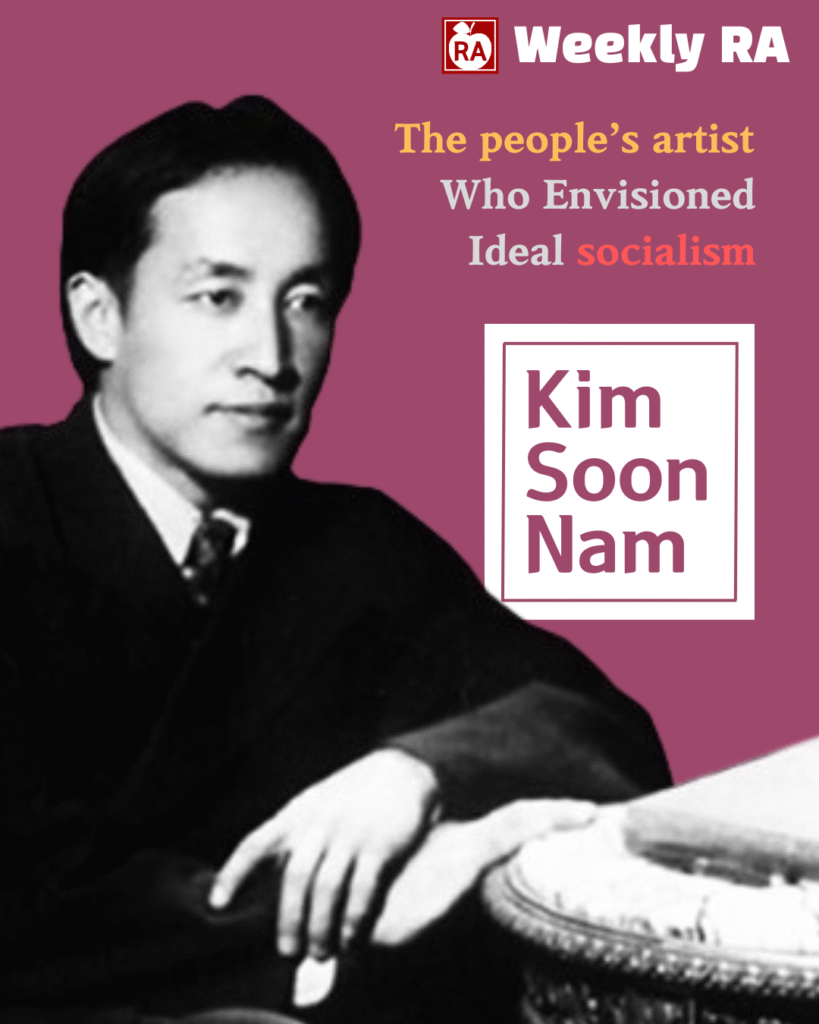Who is Kim Soon Nam?
Kim Soon nam was a Korean composer who created an impressive body of work, including dozens of art songs, political songs, two piano sonatas, Symphony No. 1, Piano Concerto No. 1, and the opera The People’s Guerrilla. His music masterfully blended elements of Western classical traditions with uniquely Korean melodies, showcasing his ability to weave the joys and sorrows of the Korean people into his compositions. As a devoted socialist, Kim Soon-nam dreamed of realizing socialist ideals. His political songs reflect a profound sense of hope and aspiration for these ideals, embodying his vision of a better future. However, he faced relentless persecution and endured significant hardships throughout his life.
Lifetime of Kim Soon Nam
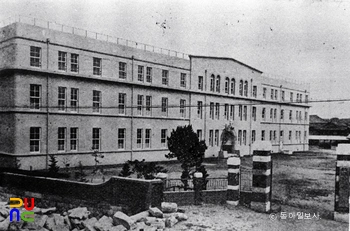
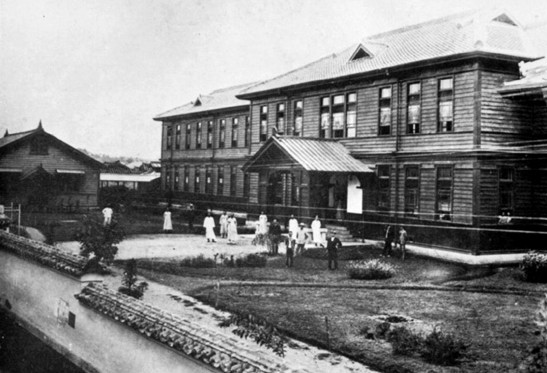
1. Early life and Study in Japan
Kim Soon Nam was born on May 28, 1917, in ‘Nagwondong’ Seoul. He learned to play the piano from his mother, who worked as an elementary school teacher. He graduated from Kyodong Elementary School and, in 1932, at the age of 15, transferred to the School of Education in Seoul. In 1937, at the age of 20, he went to study abroad at the Tokyo Music Academy. There, he was taught by Hara Tao, a socialist composer. Hara Tao’s compositions combined elements of socialism and nationalism. His unique musical style was said to have had a significant influence on Kim Soon Nam.
During his time studying in Tokyo, Kim Soon Nam was introduced to socialist ideologies. At that time, Japan served as a gateway to socialism for many Koreans, as there were almost no socialist texts available in the Korean language. As a result, many Korean students in Japan turned to Japanese literature to learn about socialism.
At the time, Japan was an imperialist power, driven by capitalism, and it oppressed Korea. For the Koreans suffering under this imperialist regime, socialism offered a promising alternative ideology. It was in this political context that Kim Soon Nam embraced socialism. From the moment he encountered socialist thought, Kim Soon Nam dedicated his life to striving for the realization of socialist ideals. His longing for these ideals is clearly reflected in the political songs he would later compose.
It was during his years in Japan that Kim Soon Nam began to seriously pursue composition. During this period, he composed Piano Sonata No. 1, a piece that caused quite a stir and was even featured in a Japanese music magazine. Unfortunately, the sheet music for this composition has since been lost, and the piece is no longer accessible for listening.
2. Return to ‘Joseon’ (Traditional name of Korea)
At that time, Korean musicians were required to join this organization to continue their musical activities. He joined the organization solely to sustain his musical endeavors. Despite this, he refused to cooperate with the imperialist agenda. Instead, Kim Soon-nam took a bold stand by establishing ‘Seung Yeon Hui,’ a secret group opposing Japanese rule, together with his friends and fellow anti-imperialists.
His actions stand in stark contrast to other musicians who collaborated with the Japanese imperialists. For instance, Ahn Eak-tai, the composer of South Korea’s national anthem, wrote a song in honor of the Japanese Emperor and was known for his pro-Nazi stance while living in Germany. Alongside him, numerous other musicians aligned themselves with the Japanese imperialists. Against this backdrop, Kim Soon-nam’s resistance and integrity can be described as not only surprising but truly awe-inspiring.
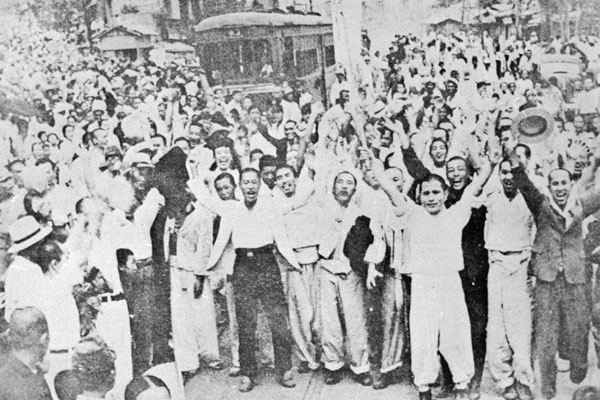
on August 15, 1945
3. Become a famous musician
On May 15, 1945, Korea was liberated from Japanese imperial rule. After liberation, Kim Soon-nam devoted himself even more diligently to composing music. Korea had become a place where musical talent could finally be freely expressed. Kim Soon-nam became actively involved in politics. He joined the ‘Democratic Ethnic Union’ and became a member of ‘The South Korean Labor Party.’ Following his political alignment, he composed songs such as ‘The Song of Liberty’ and ‘The Song for Laborers’, which were dedicated to Korean farmers and workers.
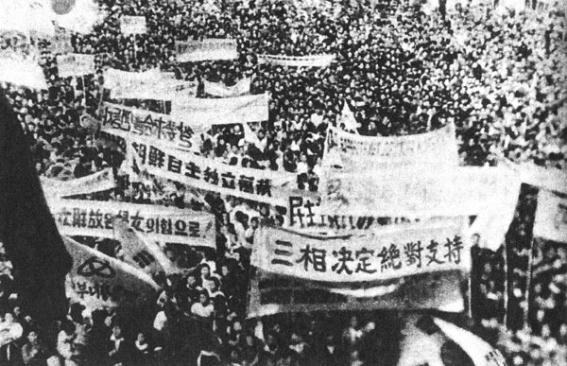
organized by left-wing parties and groups.
As evident in the phrase, “Wherever there was a gathering, The Song of Liberation and The Song of Freedom were always present,” his songs were sung like popular tunes. The Song of Liberation was performed at events various left-wing demonstrations. In that time, He composed ‘Flowers On The Mountain’ using a famous Korean poem. This song effectively captures the essence of traditional Korean musical pitch.
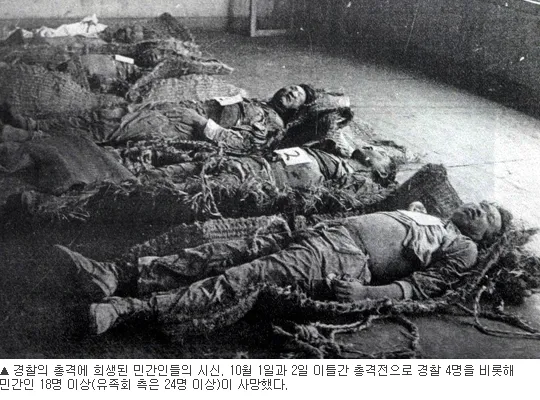
by South Korean military and police forces.
4. Suppression by U.S. military goverment in South Korea
Kim’s communist beliefs soon became a point of contention in post-liberation South Korea, where the U.S. military government was actively promoting capitalism. Tensions rose in 1946 as U.S. authorities and right-wing politicians began suppressing leftist movements, accusing communists of subversive acts such as counterfeiting. By 1947, this repression escalated into major conflicts, including the Jeju Uprising and the Yeosu–Suncheon Rebellion.
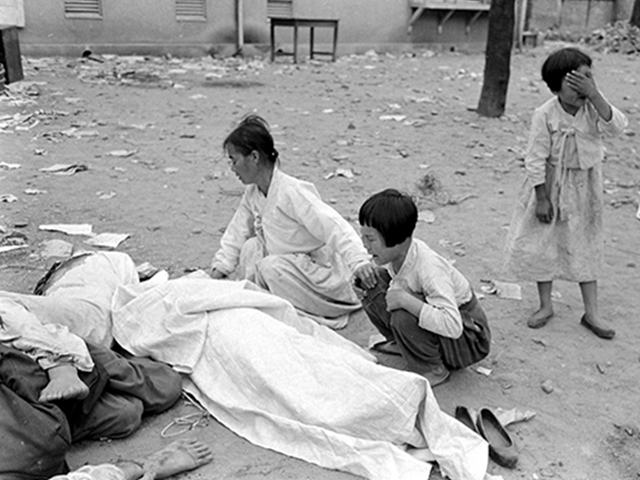
Police officers and far-right groups massacred tens of thousands of Koreans in Jeju Island and Daegu, specifically targeting suspected communists. These incidents radicalized communists in South Korea, many of whom began to militarize in resistance against the U.S. military goverement and the South Korean government. They were known as partisans. In Yeosu and Suncheon, the majority of South Korean soldiers revolted against the U.S. military, and joined to the communist partisans.
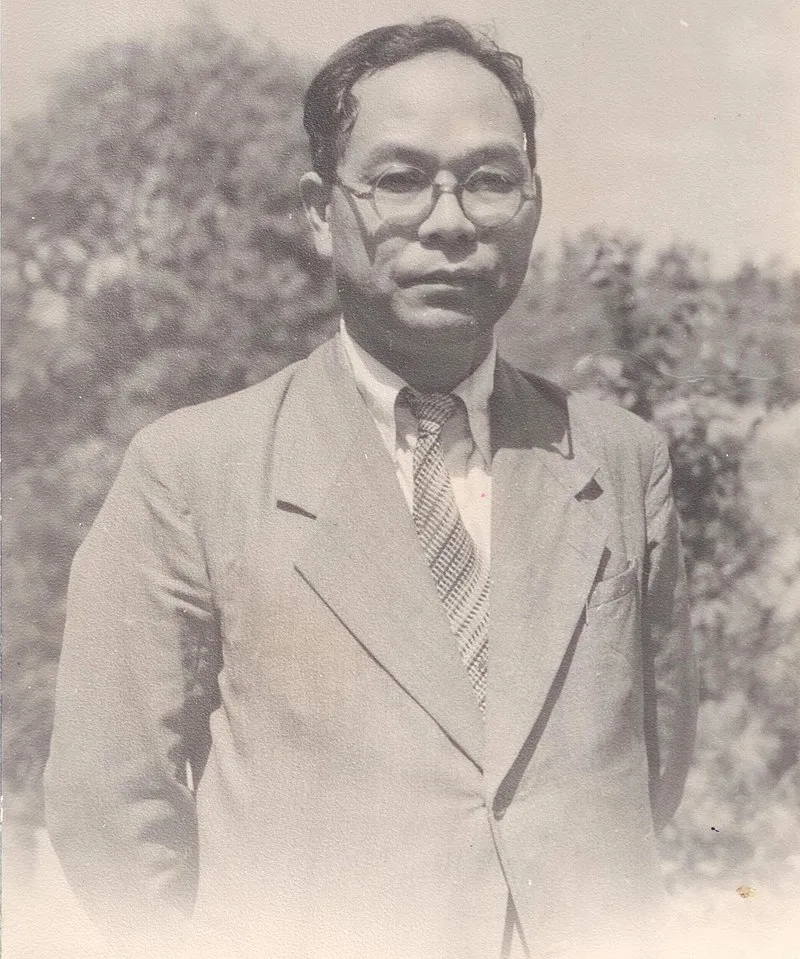
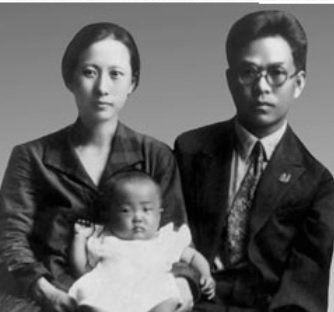
Kim Soon Nam tried to support the communists in South Korea through his music. In 1947, he composed ‘Hallasan Partisan’s Song’ for the partisans who fought against S. Korean police and army during the Jeju April 3rd Incident. He also composed ‘The Song of the People’s Revolution’ to honor the victims of the Daegu 10.1 Incident. Kim Soon Nam admired and followed Pak Hon-yong, an Korean independence activist and communist politician. Therefore, he dedicated his song as ‘The Paean for Pak Hon-yong.’ In addition to these songs, he composed many music to praised communism.
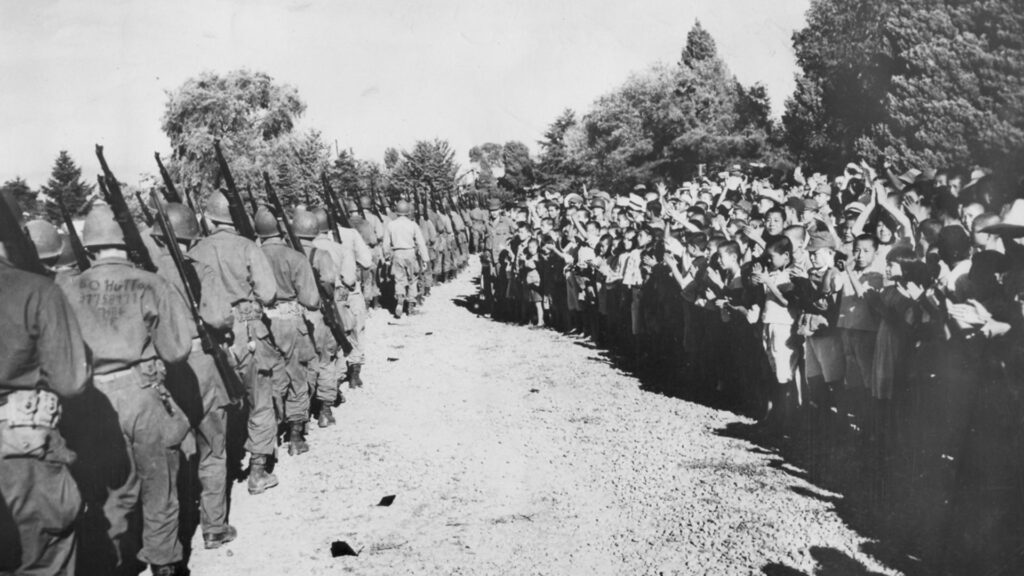
The U.S. military government issued an arrest warrant for him, so he had to go into hiding for a year. He lived a difficult life during that time, unable to meet his family. Regrettably, he had a daughter who was only three years old. While we don’t know exactly what he thought during his time in hiding, it’s likely that he missed his family. Nevertheless, he didn’t lay down his pen. During this period, he composed a lullaby for his daughter. Kim Soon Nam’s ‘Lullaby’ reflects his deep love for her. In particular, the lyrics of this song, ‘Sleep well, our baby, cute baby, in your mother’s arms, it’s a flower garden in dreamland,’ poignantly convey how much he loved his family.
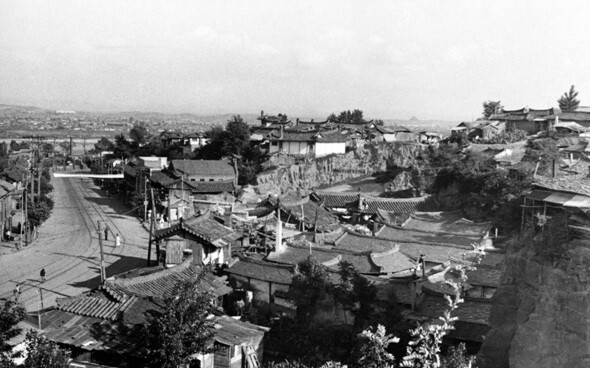
5. defected to North Korea and studying abroad In USSR
In October 1948, he went to North Korea, and after that, he was separated from his family. When he left for North Korea, his daughter was only three years old. Along with him, many musicians also moved to North Korea. In 1949, Kim Soon Nam premiered his opera ‘People’s Guerrilla Corps’, which depicted the resistance of communist partisans in The Moranbong Theatre in Pyongyang. It was the first Western-style opera in Korean history. Unfortunately, the sheet music of ‘People’s Guerrilla Corps’ doesn’t exist.
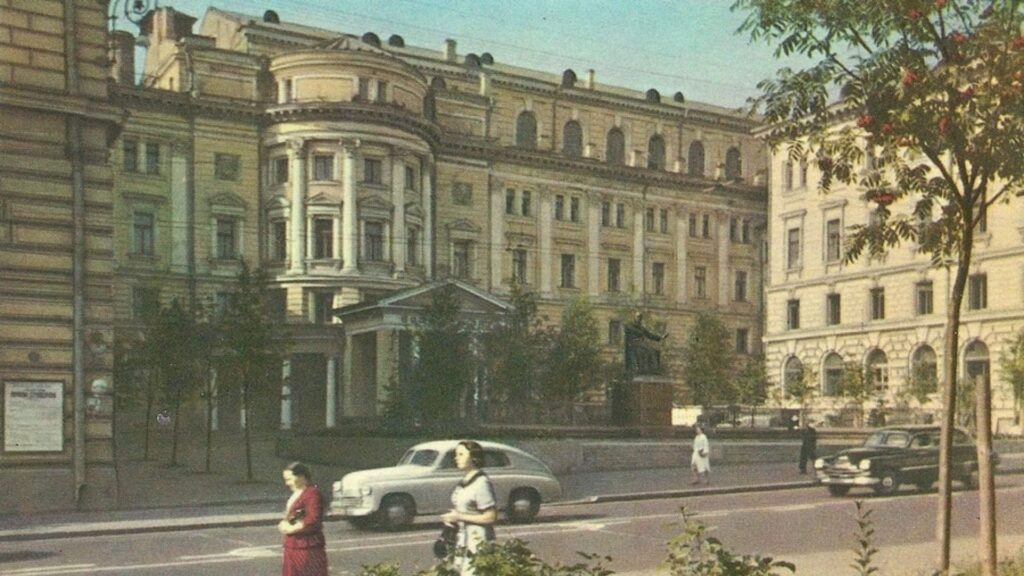
In 1950, the Korean War began with the invasion of South Korea by North Korea. However, the President of North Korea, Kim Il-sung, sent him to study abroad in the USSR. While there, he met Russian musicians such as Shostakovich and Khachaturian. During his time in the USSR, Kim Soon Nam composed ‘The Song of Korean Partisans’, which was arranged by Khachaturian. Kim Soon Nam also traveled around Eastern Europe and met many musicians. His musical style was influenced by these composers, which greatly contributed to his musical studies.
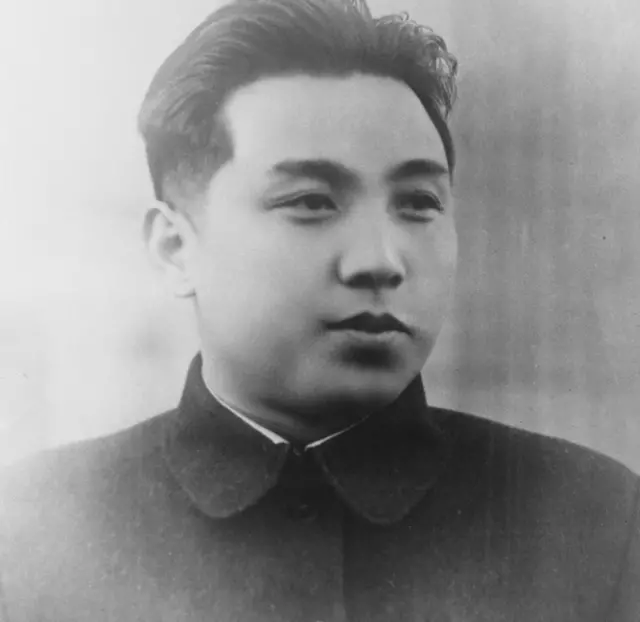
ruled the country from 1948 until his death in 1994.
In 1953, he returned to Pyongyang at the request of the North Korean government. As soon as he arrived, the North Korean government purged him, labeling his music as ‘bourgeois’ and ‘reactionary.’ However, his purge was a part of the Great Purge targeting the ‘Workers’ Party of South Korea.’ In North Korea, there was an ongoing power struggle among various factions. Kim Soon Nam supported Pak Hon-yong, who was an opposition politician to Chairman Kim Il-sung.
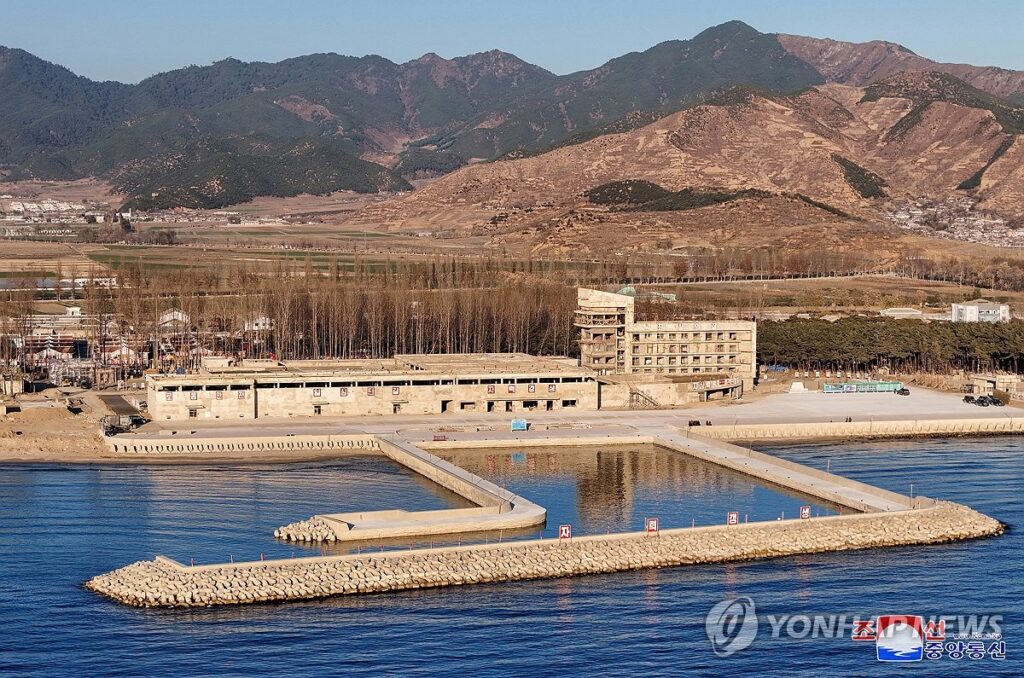
Kim Soon Nam worked at Sinpho Port in Sinpho City.
Chairman Kim Il-sung sought to establish himself as a dictator who would eliminate any opposing politicians. he committed purge Kim Soon Nam for his political goal. As a result of the purge, Kim Soon Nam was forced to work as a casting worker in Sinpho city. He was banned from any musical activities by the government and had to labor every day at the port. Kim Soon Nam’s music was suppressed under the weight of the dictator’s military boots.
6. His later years spent alone without his family
In the mid-1960s, Kim Soon Nam was reinstated by Chairman Kim Il-sung. After his reinstatement, he was able to resume his musical activities. He composed classical music using the traditional musical pitch of Hangyeong-do Province. He also composed Irun Pom (Early Spring), a piano and violin duet. When I listen to this piece, I am reminded of flowers blooming after the winter. Unfortunately, he contracted pneumonia, which prevented him from composing music after the 1970s.
In 1983, Kim Soon Nam passed away without being reunited with his family. He lived alone after defecting to North Korea and was unable to meet his family in his later years. Although we cannot know exactly how he felt in North Korea, it’s likely that he missed his family. In North Korea, there were unknown workers and a shabby house nearby. The permanent division of the country resulted in a lifelong separation from his family, which is a heartbreaking scar of division shared by many Korean families, including his family.
Kim Soon Nam, the man who loves music
Kim Soon-nam was a man who loved music. His works contain his ideals of the socialism he longed for, depictions of nature, and deep love for his family. His hand was always holding a pen, and with that pen, he calmly wrote down his music. As a person who loved music, he must have longed for the freedom to create.
However, except for the early days after liberation, most of his life was spent under constant surveillance. He was continuously watched and oppressed by the Japanese colonialists, the U.S. military government, and North Korea. This is the most unfortunate part of his life. He had to endure great suffering simply because he dreamed of socialist ideals.
The U.S. military government, Syngman Rhee, and Kim Il-sung broke Kim Soon Nam’s pen. They insulted, ignored, and degraded him. However, they could never break his love for music. No matter how much they hated Kim Soon Nam, they could not extinguish his passion and love for music.

